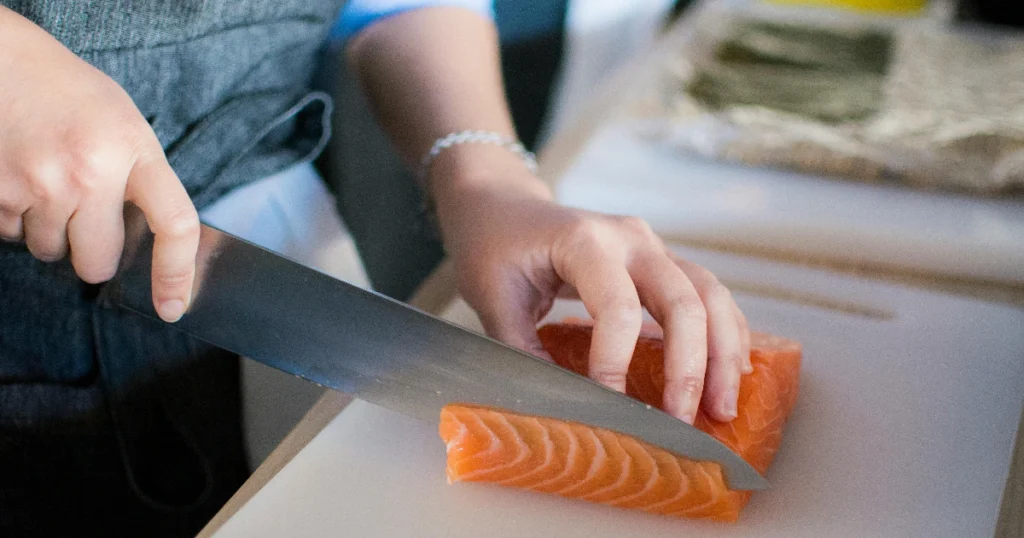Can Dogs Eat Canned Salmon and Should You Rinse It?
Table of Contents
can dogs eat canned salmon and should you rinse it?
Can dogs eat canned salmon and should you rinse it? This is a question many dog owners ask when considering sharing this nutrient-packed food with their pets. Canned salmon is a pantry staple in many households, known for its rich nutrients and convenience. As dog owners, we often wonder whether our furry friends can share in the goodness of human foods like canned salmon. This article explores the safety of feeding canned salmon to dogs, the benefits and risks, and whether you should rinse it before serving. Let’s dive in!
Is Canned Salmon Safe for Dogs?
Canned salmon can be a safe and healthy treat for dogs when prepared properly. It is a great source of essential nutrients that contribute to your dog’s overall health. However, there are a few considerations to keep in mind to ensure their safety.
The Nutritional Benefits of Salmon for Dogs

Salmon is packed with omega-3 fatty acids, which promote a shiny coat and healthy skin. These fatty acids also have anti-inflammatory properties, helping dogs with joint pain or skin conditions. Additionally, salmon provides high-quality protein essential for muscle maintenance and energy, along with vitamins like B12 and D that support a robust immune system.
Risks Associated with Canned Salmon For Dogs
Not all canned salmon is created equal. Many brands add salt and preservatives that can be harmful to dogs. Excessive sodium can lead to dehydration, increased blood pressure, or even sodium poisoning in extreme cases. It’s also essential to check the label for harmful additives like onion or garlic powder, which are toxic to dogs.
Choosing the Right Canned Salmon For Dogs
When buying canned salmon for your dog, opt for unsalted, additive-free options. Look for labels that specify “no added salt” or “low-sodium.” Additionally, wild-caught salmon is preferable to farm-raised salmon, as it typically contains fewer contaminants and is more nutrient-dense.
Should You Rinse Canned Salmon Before Feeding It to Dogs?
Rinsing canned salmon is a common step recommended for reducing the salt and preservative content, especially when feeding it to dogs.
Why Rinsing Canned Salmon Matters
Rinsing canned salmon helps remove excess sodium and preservatives that may be present. While some low-sodium options are safe as-is, rinsing ensures the salmon is as clean and healthy as possible for your dog.
How to Rinse Canned Salmon Properly
To rinse canned salmon:
- Open the can and drain the liquid completely.
- Place the salmon in a colander.
- Run cold water over the salmon, gently breaking it apart with a fork to ensure all areas are rinsed.
- Pat it dry with a paper towel before serving.
Alternatives to Rinsing
If you’d prefer not to rinse, consider purchasing no-salt-added canned salmon. Another alternative is using fresh or frozen salmon, which eliminates the need for rinsing entirely and ensures no added preservatives.
Benefits of Feeding Canned Salmon to Dogs
When prepared correctly, canned salmon offers several health benefits for your dog.
Improved Skin and Coat Health
The omega-3 fatty acids in salmon are known to enhance skin health and reduce shedding. Regular consumption can leave your dog’s coat shiny and smooth while preventing issues like dryness or itchiness.
Boosted Immune System
Salmon is rich in vitamins and minerals, including vitamin D and selenium, which strengthen your dog’s immune system. These nutrients help your pet fight infections and maintain overall health.
Healthy Alternative to Other Proteins
Canned salmon is a lean protein source, making it an excellent alternative to fattier meats. It adds variety to your dog’s diet, keeping meals interesting and nutritious.
Potential Risks of Feeding Canned Salmon to Dogs
While canned salmon is beneficial, it’s essential to be aware of potential risks to avoid health problems.
High Sodium Levels
Excessive sodium in canned salmon can harm your dog. Symptoms of sodium poisoning include excessive thirst, vomiting, and lethargy. Always check the sodium content on the label or rinse the salmon thoroughly to minimize risks.
Mercury and Other Contaminants in Fish
Like other fish, salmon can contain mercury and environmental contaminants. While the risk is low for occasional feeding, it’s crucial to avoid making canned salmon a daily meal. Opt for wild-caught salmon, which generally has lower contaminant levels than farm-raised varieties.
Allergic Reactions in Dogs
Some dogs may have or develop allergies to fish. Symptoms of an allergic reaction include itching, gastrointestinal upset, or even respiratory issues. Introduce salmon gradually into your dog’s diet and monitor for any adverse reactions.
How to Safely Include Canned Salmon in Your Dog’s Diet
Proper preparation and portion control are key to safely feeding canned salmon to your dog.
Portion Sizes for Dogs
The amount of canned salmon you give your dog should depend on their size and dietary needs. For small dogs, 1-2 tablespoons are sufficient, while larger dogs can enjoy up to half a cup. Limit salmon to once or twice a week to avoid overfeeding and potential mercury exposure.
Combining Canned Salmon with Other Foods
Canned salmon can be mixed with your dog’s regular kibble or rice for a balanced meal. Adding vegetables like carrots or green beans can provide additional nutrients. Avoid seasoning or adding sauces that may contain harmful ingredients.
Monitoring Your Dog’s Reaction
After feeding canned salmon, observe your dog for any signs of discomfort or allergic reactions. If they exhibit unusual behavior, consult your veterinarian for advice. It’s always best to discuss any dietary changes with a professional.
Conclusion
So, can dogs eat canned salmon and should you rinse it? Yes, dogs can enjoy canned salmon as a nutritious treat, provided it’s prepared correctly. Rinsing the salmon helps remove excess sodium and preservatives, making it safer for your furry friend. With its rich omega-3 fatty acids, high-quality protein, and essential vitamins, canned salmon is a healthy addition to your dog’s diet when served in moderation. By choosing the right type of canned salmon and following proper preparation steps, you can ensure your dog enjoys this tasty treat safely and healthily. Have you tried feeding your dog canned salmon? Share your experiences in the comments below!

